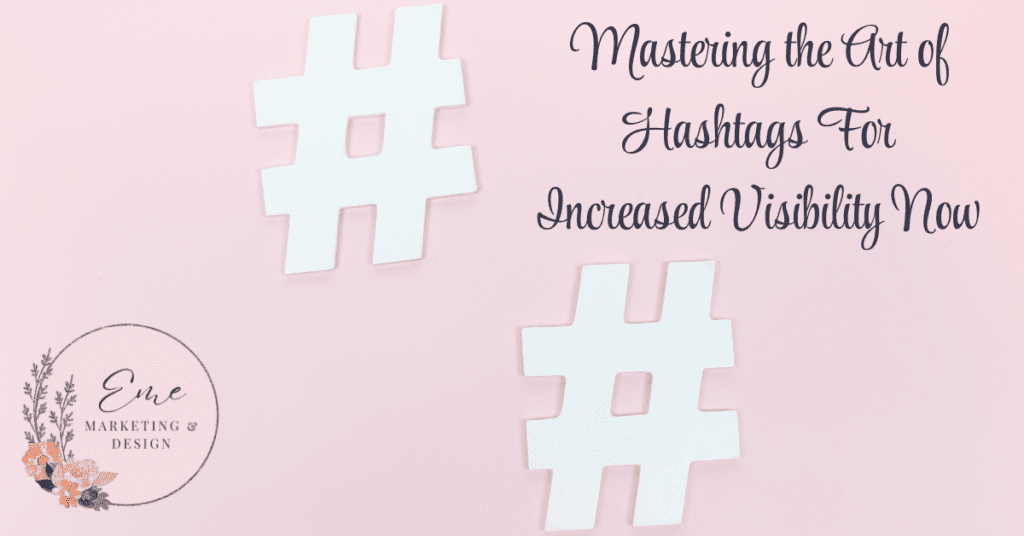
In the digital era, where social media reigns supreme, hashtags have become integral to our online vocabulary. Hashtags serve as navigational tools, guiding users to discover and engage with content that aligns with their interests. For businesses, influencers, and individuals alike, mastering the art of hashtags is crucial for enhancing visibility, expanding reach, and driving engagement.
Understanding the Power of Hashtags
At its core, a hashtag is a word or phrase preceded by the ‘#’ symbol. It categorizes content and makes it discoverable to a wider audience. Originally popularized on Twitter in 2007 by Chris Messina, hashtags have since evolved into a universal language of social media communication.
The Role of Hashtags in Social Media
Hashtags play several essential roles in social media:
- Content Categorization: Hashtags organize content around specific topics, allowing users to find and engage with posts related to their interests.
- Enhanced Discoverability: By using relevant hashtags, content creators increase the likelihood of their posts being discovered by users who are searching for or following those hashtags.
- Community Building: Hashtags foster communities of like-minded individuals, enabling users to connect and engage with others who share similar interests or passions.
- Campaign Tracking: Businesses and marketers use branded hashtags to track the performance of marketing campaigns and measure their impact across social media platforms.
Types of Hashtags
Hashtags come in various forms, each serving a distinct purpose:
- Branded Hashtags: Unique to a specific brand or campaign, branded hashtags help businesses cultivate brand identity, foster community engagement, and track the success of marketing initiatives.
- Trending Hashtags: These are hashtags that are currently popular and widely used across social media platforms. Leveraging trending hashtags can amplify reach and engagement, as they are often associated with timely events, holidays, or viral trends.
- Industry-specific Hashtags: Tailored to a particular industry or niche, these hashtags enable content creators to target a specific audience interested in a particular topic or subject matter.
- Location-based Hashtags: These hashtags are geographically targeted and are used to connect with users in specific locations or regions.
Strategies for Effective Hashtag Usage
While hashtags offer immense potential for increasing visibility and engagement, their effectiveness depends on how strategically they are utilized. Here are some key strategies for mastering the art of hashtags:
Research and Analysis
Before incorporating hashtags into your social media strategy, it’s essential to conduct thorough research and analysis to identify the most relevant and effective hashtags for your content. Here’s how:
- Identify Your Target Audience: Understand your target audience’s interests, preferences, and online behavior to determine which hashtags resonate with them.
- Competitor Analysis: Analyze the hashtags used by your competitors or industry peers to gain insights into popular trends and topics within your niche.
- Keyword Research: Use tools like Later, Semrush, Hootsuite or social media analytics platforms to discover trending hashtags related to your industry or niche keywords.
Create a Hashtag Strategy
Once you’ve conducted research and identified relevant hashtags, it’s time to develop a cohesive hashtag strategy tailored to your goals and objectives:
- Mix Broad and Specific Hashtags: Strike a balance between broad, high-volume hashtags and more specific, niche hashtags. Broad hashtags increase visibility to a wider audience, while specific hashtags target users with a more profound interest in your content.
- Use Branded Hashtags: Create unique hashtags that reflect your brand identity and resonate with your audience. Encourage followers to use branded hashtags when sharing user-generated content or participating in contests and campaigns.
- Incorporate Trending Hashtags: Monitor trending hashtags and capitalize on relevant ones to join timely conversations and increase exposure for your content. However, ensure that your trending hashtags are authentic and aligned with your brand values.
- Test and Iterate: Continuously monitor the performance of your hashtags and analyze engagement metrics to refine your hashtag strategy over time. Experiment with different combinations of hashtags and evaluate their impact on reach, engagement, and follower growth.
Hashtag Best Practices
In addition to strategic planning, adhering to best practices can enhance the effectiveness of your hashtag usage:
- Keep It Relevant: Use hashtags that are directly related to your post’s content. Irrelevant or excessive hashtags can come across as spammy and may deter users from engaging with your content.
- Limit Hashtags: While platforms like Instagram allow up to 30 hashtags per post, it’s best to exercise restraint and focus on quality over quantity. Aim for a mix of 5-10 relevant hashtags per post to maintain readability and authenticity.
- Customize Hashtags for Each Platform: Tailor your hashtag strategy to each social media platform’s specific requirements and conventions. While Instagram favors hashtags in the caption or first comment, Twitter integrates hashtags seamlessly into the body of tweets.
- Engage with Hashtag Communities: Don’t just use hashtags as a broadcasting tool; actively engage with the surrounding communities and conversations. Like, comment, and share posts from other users using the same hashtags to foster relationships and expand your network.
Measuring Success and Iterating
The final step in mastering the art of hashtags is to measure the success of your efforts and iterate based on insights gathered from analytics:
- Track Performance Metrics: Utilize built-in analytics tools provided by social media platforms or third-party analytics solutions to monitor the performance of your hashtags. Key metrics to track include reach, impressions, engagement rate, and follower growth.
- A/B Testing: Conduct A/B tests by comparing the performance of posts with different sets of hashtags to identify which combinations yield the best results. Experiment with variations in hashtag volume, specificity, and relevance to optimize your strategy.
- Iterate and Refine: Based on the insights from analytics, refine your hashtag strategy by eliminating underperforming hashtags, doubling down on those that drive engagement, and exploring new trends and opportunities.
- Stay Updated: Social media trends and algorithms are constantly evolving, so staying informed about changes that may impact your hashtag strategy is crucial. Stay abreast of industry news, platform updates, and emerging trends to adapt your approach accordingly.
Final Thoughts
In the ever-expanding universe of social media, hashtags are the guiding stars illuminating our content’s path to visibility and engagement. By mastering the art of hashtags and incorporating them strategically into your social media strategy, you can unlock new avenues for reaching and connecting with your target audience. From research and planning to execution and analysis, effective hashtag usage requires creativity, data-driven decision-making and adaptability. By embracing hashtags as powerful tools for discovery and community building, you can elevate your online presence, amplify your message, and drive meaningful interactions with your audience.




